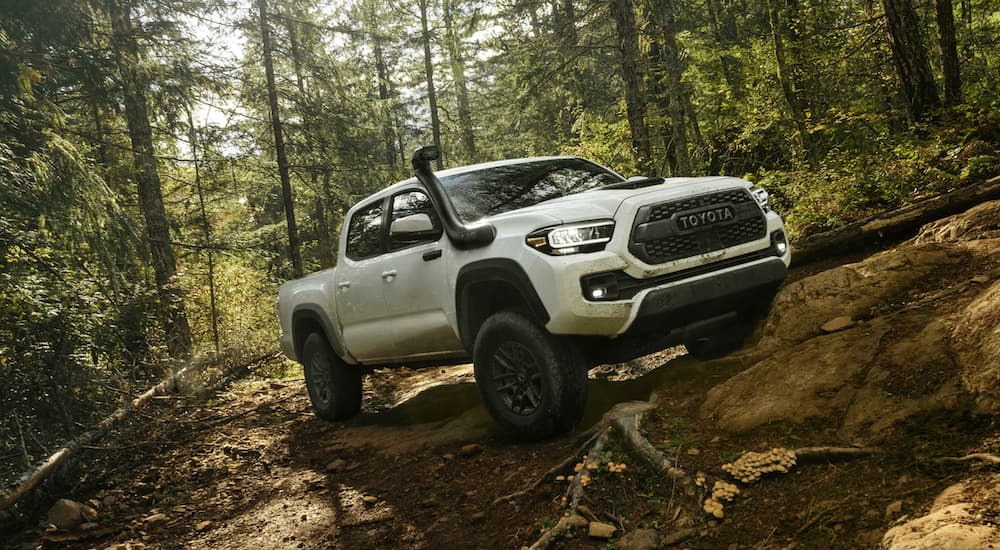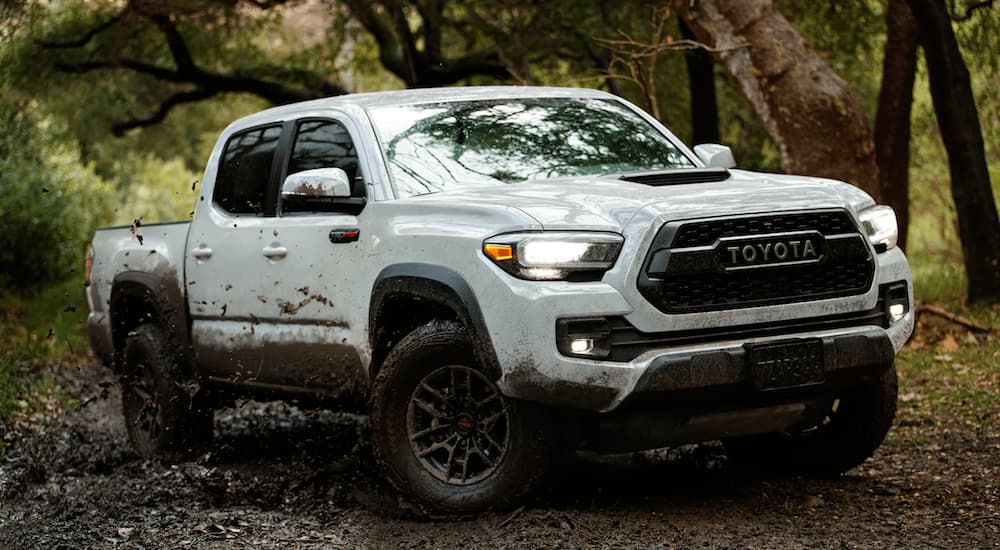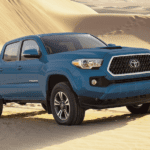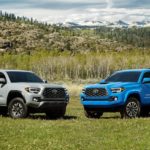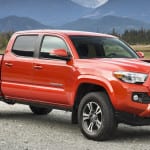You’ll be hard-pressed to find someone who has bad remarks or complaints to make about Toyota. The brand started appearing on American shores during the economic boom period of the 1950s. Since then, it has adapted to hardships, be it the energy crisis of the 1970s or the recent microchip shortage. And more importantly, Toyota has maintained a track record that’s been consistent with the high expectations of quality that many have regarding the manufacturer. If you’ve ever stepped on the grounds of your local Toyota dealership, then you’ve noticed the various models that make up the highly acclaimed Toyota fleet.
One of the areas of the industry that Toyota has long applied its expertise to is the pickup truck. Ever since debuting in 1995, the Toyota Tacoma has brought many the power and performance they need in a pickup, with the expertise and high-grade engineering that Toyota has long been known for. Prepare yourselves for a special treat because we’re going to crack open the history books and explore the past, present, and possible future of the Tacoma and see why it’s become the game-changer that it has.
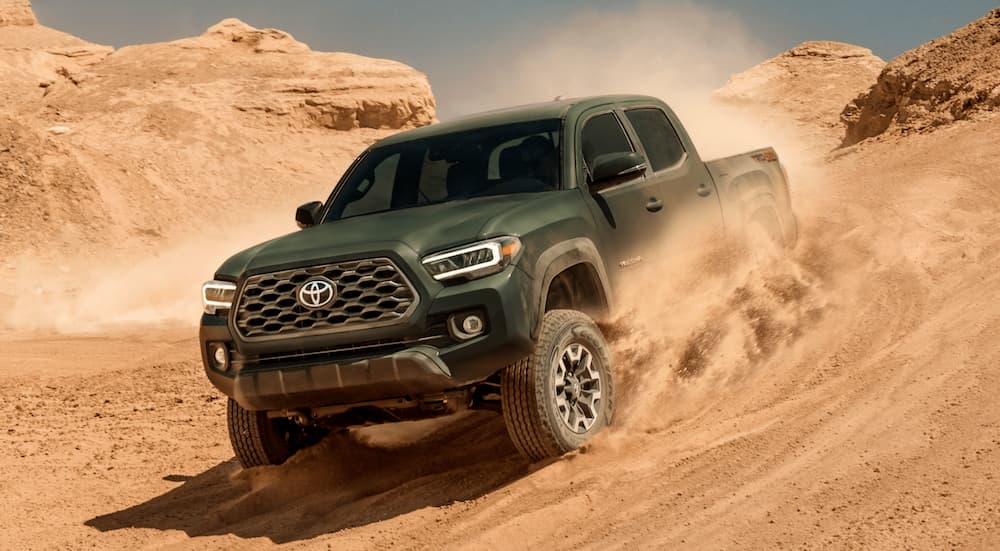
Humble Beginnings and Carrying on a Legacy
The year is 1995, and we’re at the halfway point of a decade that has seen many tumultuous events in both politics and popular culture. It’s in this backdrop of post-irony, impeachment, and boy bands that the Tacoma makes its debut. This had been a project that first began in 1989 with the intention of making a truck that was superior to the competition and could be owned and operated with relative ease by the average consumer. A bold and ambitious goal, but one that wasn’t impossible to achieve…
What set the Tacoma apart from some of the other trucks in its class was the focus on a drivetrain that was more economical in terms of fuel consumption, scaled down from the gas-guzzling V8s that were prominent at the time. 2.4L and 2.7L 4-cylinder options were available, as was a slightly larger 3.4L V6. The impact of a more fuel-efficient truck was felt instantaneously. The 1995 Ford F-150, for example, got 15 MPG combined, and this was with a 2WD drivetrain and the smallest engine available. A Toyota Tacoma from the same year proved its worth at 22 MPG combined. That’s a debut worthy of a champion.
The first generation of Tacoma proved formidable, and just to show that Toyota was willing to go head-to-head with all makes and models, 1998 saw the Tacoma come out with the TRD Off-Road package. Competing with the Chevy S-10 ZR2, it proved the world that exists off the beaten path was ripe for the taking. As the decade ended, Toyota chose to do what it had done for several years prior, and that was to improve upon what was already successful. As the new millennium began, Toyota began the process of developing the second generation of Tacoma. Already outselling the Nissan Frontier and Dodge Dakota, the only truck that managed to eclipse it in sales was the Ford Ranger. Stylish and successful, the Tacoma could only get better.
Lightning Doesn’t Strike Twice, But the Tacoma Does…
With such a remarkable debut and sales figures that would blow the minds of any business executive, improving upon the Tacoma seemed beyond the realms of possibility. After all, how do you perfect what’s already the working model of perfection? Well, like so many of its American competitors, Toyota gave the people what they wanted—variety.
With an astounding number of different configurations in cab and bed sizes that customers could choose from, it appeared that Toyota was intent on making a truck for any driver, no matter what their individual needs and taste might have been. This variety was also seen in the new additions to the Tacoma’s powertrain offerings. For the available powertrains, drivers now had a choice between either a 4-speed or 5-speed automatic. For those who wanted to exert more control, 5-speed and 6-speed manual transmission were now on the table. As for the available engines, the choice was now easier than ever with a 2.7L 4-cylinder capable of 159 horsepower or a slightly more powerful 4.0L V-6 that boasted 236 horsepower and 266 lb-ft of torque.
Toyota was also determined to provide drivers with not just a dependable truck but one that was, above all else, safe. 2009 would see the Tacoma receive one of the highest safety ratings to be bestowed upon a pickup by the IIHS (Insurance Institute for Highway Safety). This distinct honor separated Tacoma from many of its competitors, who were still playing catch up to the Tacoma’s expert efficiency. Ever aware of how variety is what so many consumers look for, Toyota would introduce a counterpart to the existing TRD Off-Road package. The TRD Sport, which included fancier wheels and Bilstein suspension, made its first appearance in 2009. Whether someone intended to duke it out in the dirt or have the sports car feel in a pickup, the option was available for them.
A Dominating Presence in the Present Day
2016 brought the third and present generation of the Tacoma. The fact that so little has changed since the truck’s inception goes to show that Toyota broke the mold and all the rules when it was first introduced. Remarkably, very little was changed as far as performance was concerned, the V6 was scaled down from a 4.0L to a 3.5L, and as of 2018, the powertrain options have been limited to a 6-speed automatic or a 6-speed manual. However, the smaller V6 engine didn’t lack power, with some 278 horses and 265 lb-ft of torque.
Since 2018, Tacoma sales have topped sales figures in the 200,000+ range, making it one of the most popular vehicles on the road today. In 2020, one of the biggest changes to the Tacoma was undertaken, and the truck was given a makeover in the form of a brand-new facelift. An intimidating front end and a sleek body made the Tacoma stand out even more than before. The newest alteration to the standard-bearer of Toyota’s truck and SUV line came with the introduction of the TRD lift kit for all models manufactured in 2020 and beyond. While it might be hard to tell where the Tacoma goes from here, it won’t have any trouble getting there, especially with its elevated ground clearance.
The More Things Change, The More They Stay the Same…
Through three generations of greatness and innovation, the Tacoma has changed very little since it first appeared. This is a testament to the versatility, performance, and durability of Toyota and its truck. With each model year that passes, we see drastic changes from manufacturers everywhere. However, the Toyota Tacoma is content being the foundation that so many can rely upon. It’s safe to assume that while the world will always be unpredictable, the Tacoma will always be a viable option for consumers who need a truck in their life. Some might be content to change their tune on a yearly basis, but for the Toyota Tacoma, the song (and standard of quality) remains the same.
